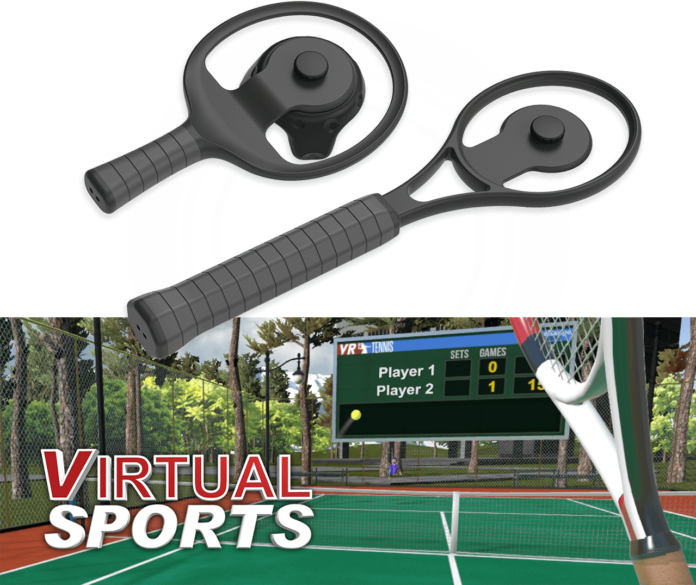HTC created a $99 device that adds real-world tactile objects into the game world. Dubbed the Vive Tracker, its most novel use was in apps like VR Chat. Users would attach them to their waist for a full-body tracking simulation, but the device has attachments and accessories that make it usable in other ways.
One of my favorites is the tennis racket, compatible with Racket Fury, Eleven, and Racket NX (VR Sports GOTY). More developers are utilizing this tracking potential to create 1:1 motion tracking, but their creations aren’t necessarily showing up on Steam or in the Oculus or PS Store. What is it about this high-performance tracker that is unlocking athletic potential?
VR Sports Conditioning
First, let’s breakdown some of our known issues in athletic training. For one, practice time is precious and some players get single-digit minutes to run drills that will be crucial to game time. Conditioning daily also takes a toll on the body, one that can’t be maintained indefinitely. We also know that there’s a mental game, and conditioning for it is new territory. We know repetition plays a role, but each athlete has a different anxiety or shortcoming.
Let’s look at two applications that use the Vive Tracker to overcome these issues.
Sense Arena
Sense Arena, founded in 2017, is a Czech tech startup that wants to improve hockey players without the risk for brain injury. The company feels the brain is an underdeveloped muscle in the game of hockey, but no less crucial.
To strengthen it, Sense Arena has attached a Tracker to a hockey stick and added room tracking. With 25+ drills out of the box, the application offers extensive opportunity to hone a player’s individual skills. Drills focus on improving reaction and deflection, decision making to force rapid response, reading passing lanes, and general situational awareness.
Sense Arena collects real-time diagnostic results and presents them in a web-based interface. Coaches and players can review individual statistics, or compare benchmarks. With a worldwide active user base, teams can essentially benchmark from among the best in the world.
MiHiepa

Although we’ve covered the soccer startup, it uses the Vive Tracker to simulate virtual legs. MiHiepa tracks what it calls “natural movement” data points, presenting a clearer picture of the player’s wellness and cognitive abilities, as well as skill level.
70+ drills offer various ways to test a player. Color combo drills teach players ball handling. Players hone pass awareness, and are scored on decision making. These data points give coaches an idea of a player’s overall readiness for play. The key is these drills take place in a low-risk virtual environment.
Pro-Level VR Conditioning
Both systems focus on player recovery time, as in how a player can grow while recovering from injury. Much of professional athletics is managing the body. With VR systems, players have an edge in training and mental growth.
It’s possible that future athletes will focus more on conditioning and muscle memory, while honing the mental game in VR and on the field. Similar to a scrimmage, there’s much we can learn by just performing actions. Especially when we have powerful data collection to do number crunching and measure quantifiable results or expectations.
Final Thoughts
Is the Vive Tracker the answer to sports simulation in VR? It seems that the true sport simulation occurs at this higher level of hardware and performance. There is more going on than simple simulation, as systems crunch data and build profiles for athletes.
I wonder about weight and weight distribution. Something like a hockey stick or a golf club needs to feel a certain way. I’m concerned that higher level athletes will have an expectation of realness that simulation will need to meet for wider adoption.
Benchmarking a team is important, both for skill level of peers and competitive skill level overall. As this technology becomes more mainstream, coaches should be asking themselves what they can learn about their own coaching style from these benchmarks. If a team consistently falls short in certain areas, a teamwide change may do the organization well.


